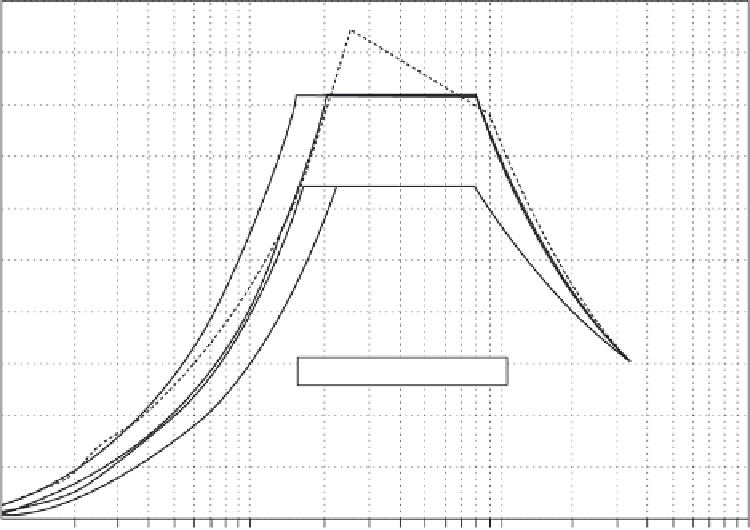Environmental Engineering Reference
In-Depth Information
1
R
eg guide 1.60
0.9
84th CR-0098 soil
0.8
64th CR-0096 rock
0.7
Median CR-0098
soil
50th
0.6
Median CR-0098 rock
0.5
0.4
0.3
5% Spectral damping used
0.2
0.1
0
0.1
10
100
Frequency (Hz)
FIGURE 11.48
Examples of aggregated site-independent ground motion response spectra. (From Johnson, J.J.,
Earthquake
Engineering Handbook,
Chen, W. and Scawthorm, C., Eds., CRC Press, Boca Raton, Florida, 2003, Chap. 10. With
permission. After U.S. NRC NUREG-0098.)
acceleration vs. frequency. The frequency content of the motion is one of the most impor-
tant aspects of the free-field motion as it effects structural response. In the absence of site-
specific response spectra it has been used to define design criteria in the United States and
in other countries (Johnson, 2003).
General Procedure
The procedure is illustrated by a sample analysis of major structures for a nuclear power
plant presented by Idriss and Sadigh (1976), as shown in
Figure 11.49.
Ground motion was
specified at the foundation level.
Step 1
: Because the control motion is specified typically at some point below the surface
in the free field, a deconvolution analysis is necessary to determine compatible base-rock
motions. These are the motions that must develop in an underlying rock formation to pro-
duce the specified motions at the control point. SHAKE is a widely used computer pro-
gram for computing one-dimensional seismic response of horizontally layered soil
deposits based on the equivalent-linear method. It is used in the deconvolution analysis,
in which the most important assumptions are
The site response is dominated by shear shaking from below, and all other modes
of seismic energy are neglected.
●
The shear shaking is undirectional and the site responds with a state of plain
strain.
●














